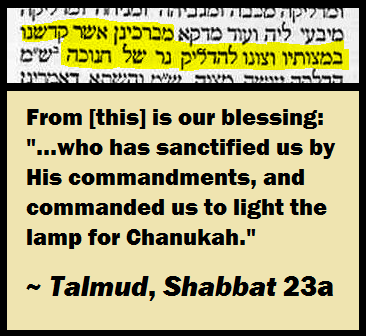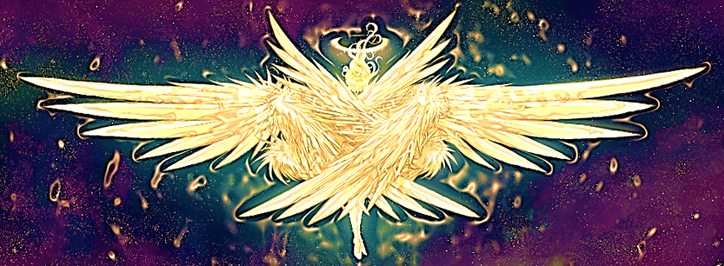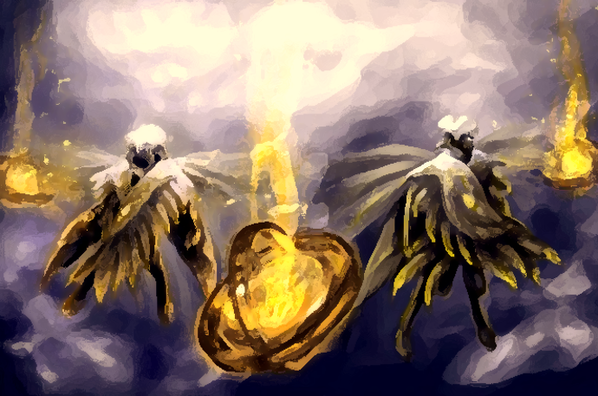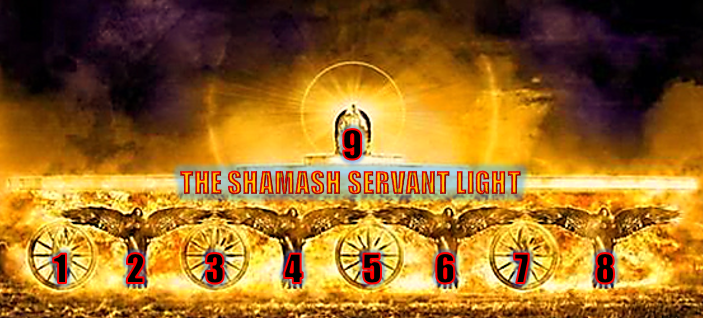LEHADLIK NER CHANUKAH
by Jeremy Chance Springfield
12/9/18
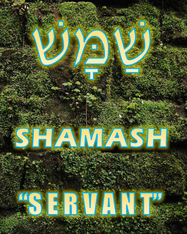
The observance of Chanukah is a time of joy and celebration, but also one where an unusual performance is done by the faithful. Whereas other festivals are performed with commandments enacted exactly as we see them explained in the Word, Chanukah is notably different. It arose long after the Torah was given and commemorates a time outside of the yearly-observed festivals commanded therein. The memorial time recalls the astounding victory of priests who led our people against the flood of paganism and its spoiling influence, a win that preserved the true faith from annihilation. For those interested, see my study: DEDICATE THE HOUSE for a brief history and explanation of the spiritual significance of the celebration of Chanukah in direct connection to the commandment found in the Torah. However, the actual event is remembered by the lighting of a special lamp – the chanukiah – an eight-branched candelabrum with a ninth light – the SHAMASH “servant” to kindle the others. This is particularly unique in that the remembrance revolves around a miracle involving the re-lighting of the holy menorah – the seven-branched candelabrum commanded in the Torah to light the Holy Place of the Temple.
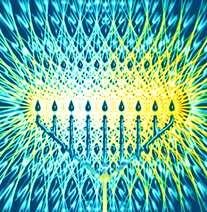
Therefore, in marked distinction to the Biblically-mandated construction of the menorah, the observance of Chanukah requires a candelabrum that looks much different in its chanukiah form. This distinct, eight-branched version with accompanying SHAMASH light is not arbitrary in form, but full of meaning intended by the minds of religious men and further imbued with spiritual significance by the Holy One – more of which will be explained as this study progresses.
Not only that, but the eight-day festival has also a unique factor in its traditional blessing that bears upon its spiritual importance in a way that is not normally appreciated. The latter half of the blessing is preserved for us from antiquity in the text of the Talmud Bavli, Shabbat 23a, where we are told it consists of a simple, yet intriguing, statement.
Not only that, but the eight-day festival has also a unique factor in its traditional blessing that bears upon its spiritual importance in a way that is not normally appreciated. The latter half of the blessing is preserved for us from antiquity in the text of the Talmud Bavli, Shabbat 23a, where we are told it consists of a simple, yet intriguing, statement.
This blessing recorded for us in the Talmud seems rather straightforward in its content. In fact, the blessing in its entirety is recited each of the eight nights at the lighting of the chanukiah and the memorial continues without any further mention of the nuance contained in the blessing. It is as follows:
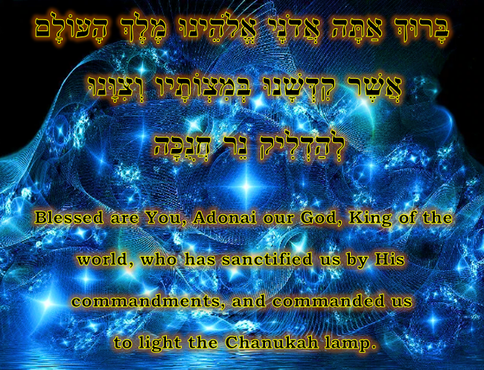
Barukh atah Adonai Eloheinu Melekh ha’olam asher qidshanu bemitzvotav vetzivanu lehadlik neyr Chanukah.
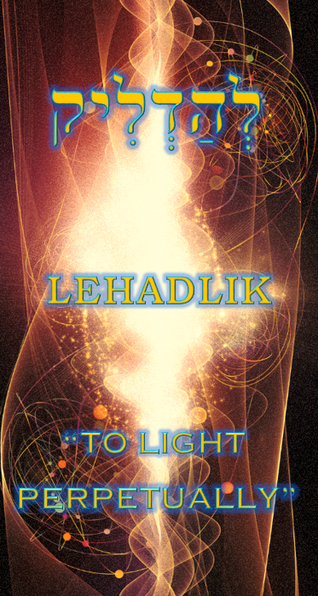
What makes this simple Hebrew blessing of note?
The answer lay in the term LEHADLIK “to light” or “to kindle.” The term is straightforward, but its conjugation is of particular interest. The term implies a continual lighting, not a once-and-done event. LEHADLIK signifies a perpetual lighting of the chanukiah lights. This wording is typically not commented upon when it comes to Chanukah festivities, but it is spiritually significant and worth mentioning to all who appreciate the merits of remembering the Torah’s commandment to dedicate the Holy House that lays at the heart of Chanukah. The idea embedded in the Hebrew blessing and its term of LEHADLIK is that of an eternally-observed kindling of the lights.
How can we say such a blessing? How can the lights of Chanukah be kindled for all eternity? Where is such a thing allowed to us in the Word? Truly, this may seem strange – a memorial of a victory established by faithful priests becoming a significant observance that is held for eternity. How is such a thing possible? Why would this be allowed by the Holy One? How could He sanction this as authoritative in His Kingdom?
The answer lay in the term LEHADLIK “to light” or “to kindle.” The term is straightforward, but its conjugation is of particular interest. The term implies a continual lighting, not a once-and-done event. LEHADLIK signifies a perpetual lighting of the chanukiah lights. This wording is typically not commented upon when it comes to Chanukah festivities, but it is spiritually significant and worth mentioning to all who appreciate the merits of remembering the Torah’s commandment to dedicate the Holy House that lays at the heart of Chanukah. The idea embedded in the Hebrew blessing and its term of LEHADLIK is that of an eternally-observed kindling of the lights.
How can we say such a blessing? How can the lights of Chanukah be kindled for all eternity? Where is such a thing allowed to us in the Word? Truly, this may seem strange – a memorial of a victory established by faithful priests becoming a significant observance that is held for eternity. How is such a thing possible? Why would this be allowed by the Holy One? How could He sanction this as authoritative in His Kingdom?
The answer may be surprising, yet it is found to be contained in a bizarre but important vision given to the prophet Ezekiel. In the opening chapter of the book by his name, the prophet tells us something that should not be missed in 1:1.
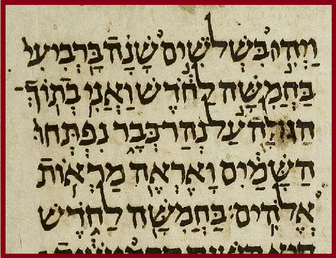
And it came to be in the thirtieth year, in the fourth [month], on the fifth of the month, that I was among the exiles at Nehar Kevar. The heavens were opened, and I saw sights of Elohim!
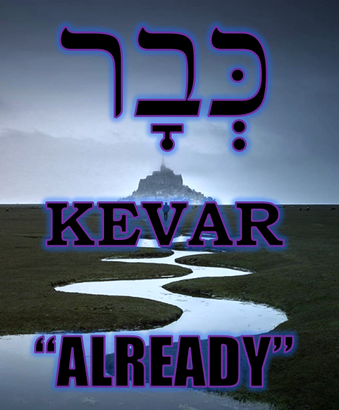
In this land so far from home, in the midst of a shameful exile due to idolatry and stubborn sins, Ezekiel sat mourning with his fellow Israelite captives at the river Kevar and experienced something that no other prophet before him was privileged to view: he saw sights of Elohim in His heavenly abode more intimate than ever previously bestowed to men. The parameters of this vision was somewhat different than others, however. He experienced these visions at a place called Nehar Kevar, which in Hebrew is the literal phrase: “The Flow of Already.”
The inspired text is telling us something with this detail. This is prophetic language in use. The Hebrew text actually reads in the literal that he was among the exiles AL NEHAR KEVAR “above the flow of Already.” The term AL can be used to mean “at” but is literally indicative of “above” a thing. This means that he was stepping out of the normal flow of time and space – he was above the flow of all events.
How is this so?
The inspired text is telling us something with this detail. This is prophetic language in use. The Hebrew text actually reads in the literal that he was among the exiles AL NEHAR KEVAR “above the flow of Already.” The term AL can be used to mean “at” but is literally indicative of “above” a thing. This means that he was stepping out of the normal flow of time and space – he was above the flow of all events.
How is this so?
The words of another very blessed individual before him help set this in context, using the same term to signal the truth of what Ezekiel was about to see and what is important for us to understand concerning Chanukah. King Solomon himself wrote in Ecclesiastes 3:15 a statement about the facts of reality.
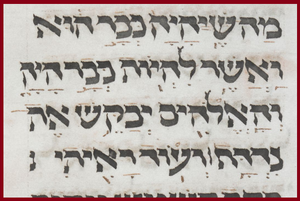
What is already [has been], and that which is to be already was, and Elohim seeks what has been pursued.
Solomon uses twice the word KEVAR in this statement: what is has already been, and what shall be already was, and in it all, the Holy One is striving for what has been pursued. These details show us that what Ezekiel sees at this river is beyond the now. It is outside of time, so that means it is everlasting – this is essentially the same as LEHADLIK “to perpetually light.”
Knowing this, let us move forward into the vision Ezekiel sees. The text tells us that he witnesses an astounding event. The account spans the entire first chapter of the book, but we are going to focus on just a few key passages to help us appreciate the nuances of the chanukiah blessing. The vision begins with Ezekiel seeing a storm from the north, and in it, four living creatures which we later learn are KERUVIM (cherubim in English versions). He begins to describe in detail these odd heavenly beings, and that is where we need to pay attention now. The true depth of the vision is far more than this study will even begin to touch, for it centers on what is known as the MERKABAH “the chariot” that bears the Holy One, and in that respect, is beyond the scope of this topic. What will be briefly brought up here is a simple link to Chanukah and the importance of our blessing regarding the kindling of the eight lights.
In 1:13, we read the initial details of importance to us.
Knowing this, let us move forward into the vision Ezekiel sees. The text tells us that he witnesses an astounding event. The account spans the entire first chapter of the book, but we are going to focus on just a few key passages to help us appreciate the nuances of the chanukiah blessing. The vision begins with Ezekiel seeing a storm from the north, and in it, four living creatures which we later learn are KERUVIM (cherubim in English versions). He begins to describe in detail these odd heavenly beings, and that is where we need to pay attention now. The true depth of the vision is far more than this study will even begin to touch, for it centers on what is known as the MERKABAH “the chariot” that bears the Holy One, and in that respect, is beyond the scope of this topic. What will be briefly brought up here is a simple link to Chanukah and the importance of our blessing regarding the kindling of the eight lights.
In 1:13, we read the initial details of importance to us.
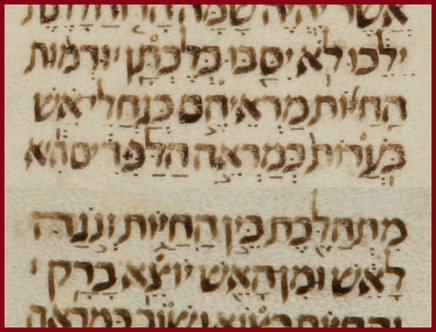
And the likeness of the living creatures – their sight – was as coals of fire with burning, like the sight of the lamps. It moved between the living creatures, and was brilliant for fire, and from the fire went forth lightning.
The four living creatures are described as looking like burning coals of fire, like lamps / torches. Such a description and the relationship to Chanukah / the menorah is not to be dismissed. This fire is even said to move between the four creatures, and from the fire leapt bolts of lightning. This description is astounding in itself. These four living creatures, known as KERUVIM in the Hebrew, are directly related to the throne of the Holy One, as the account makes clear.
The vision continues, and Ezekiel elaborates further upon what sights he saw in 1:15-16.
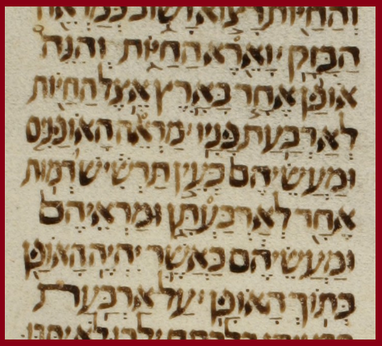
15 And I saw the living creatures, and behold! one wheel was on the earth, by the living creatures, before his four faces.
16 The sight of the wheels, and their construction, was as an eye of beryl, and the likeness for the four was one, and their sight and their construction as it were the wheel in the midst of the wheel.
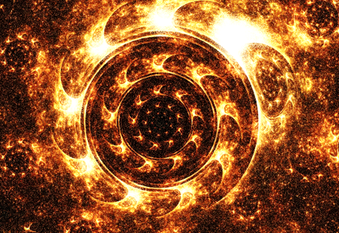
The vision given to Ezekiel now broadens to include the description of the mysterious and strangely-colored OFANIM "wheels" connected to the presence of the KERUVIM. They are described as wheels within wheels in the broader scope of this account, and yet, the true nature of their form is not entirely clear just based on the information contained in the text itself. These wheels are themselves some type of living heavenly being that are closely associated with the four KERUVIM, based on the information that is provided for us in their full description in the passage, and they are described in a later vision from Ezekiel 10:6 as also having fire in their midst, just like the KERUVIM.
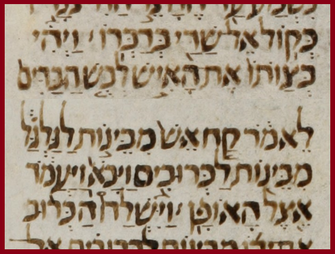
And it came to be at the command of the man clothed [with] linen, it was said, “You must take fire from between the rings, from between the keruvim.” And he went in and stood beside the wheel.
These details provide us with information now that can be assessed in a more complete manner. Ezekiel saw four living creatures, and a wheel within a wheel by each one of them – for a total of eight living beings, and each of them burning with fire as coals, like the torch of a lamp.
The information given to Ezekiel in the vision coalesces to the description of yet another astounding vision above the four living creatures and the four wheels: the image of a man upon a throne in Ezekiel 1:26-27.
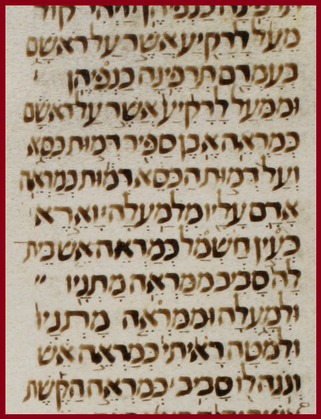
26 And from above the expanse which was over their heads was a sight of a sapphire stone, like a throne. And over the likeness of the throne was a likeness of a sight of a man upon it from above.
27 And I saw as the eye of amber, as the sight of fire within it, [and] surrounding. From the sight of his loins and above, and from the sight of his loins and below, I saw as the sight of fire, and its brilliance surrounding.
Held aloft by the presence of the four living creatures and the accompanying wheels is a sapphire throne upon which sits the likeness of a man. Yet, this is not just any normal human in appearance, but someone who, like the fiery lamp-like creatures that bear him, is himself lit afire from head to toe! The chapter ends by telling us that this was the appearance of the glory of the Holy One shown to Ezekiel.
The imagery we are thus presented with is eight heavenly creatures burning like lamps, and then a ninth Persona who is likewise shown burning, situated above all the others. While artistic depictions have attempted to capture what this spectacular vision might have consisted of, we can be sure that the reality is far more than the imaginations of men. Instead, taken in a spiritual sense, we have the curious set-up of a Chanukah candelabrum – a chanukiah of eight lamps with a distinct ninth one known as the SHAMASH – the “Servant” light that ignites all others.
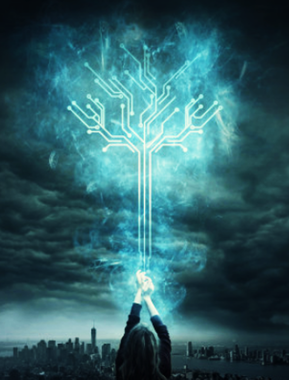
All of this takes us back to the initial questions of the significance of the wording in the blessing of the chanukiah lights. It is a blessing to kindle them perpetually. His faithful are LEHADLIK “to light” them forever because of what they ultimately symbolize: the illuminated Holy One on His throne carried aloft by the eight entities engulfed in flames! As He is eternal and His throne everlasting, so too do we kindle lights forever that go beyond the remembrance of a human victory over oppressors.
Lighting the lights of the Chanukah candelabrum is a physical action that links us to the spiritual reality of His eternal Kingship: no earthly nation rules over those who are part of His Kingdom of Light. He has bestowed authority upon His people to perceive the meaning of spiritual victory and the value of connecting to Him by ascribing Him honor in this world - the lights of Chanukah and the blessing display the worth we know to be in fighting for Him in order to see Him reign over us all. It is an affirmation of what is happening in spiritual - the King is on His throne, attended to by His keruvim, living out the truth of the symbolism embedded in the chanukiah itself! When we kindle, we rededicate our reality to Him and the rule that goes beyond this physical realm.
The igniting of the chanukiah and the special blessing spoken over it sheds light on the fact that although we are in this world of “already,” our worship is above that physical flow and linked to the Eternal One whose throne is everlasting, and whose Kingdom is one of priests who will fight to let the brilliance of His Presence illuminate all of creation.
Lighting the lights of the Chanukah candelabrum is a physical action that links us to the spiritual reality of His eternal Kingship: no earthly nation rules over those who are part of His Kingdom of Light. He has bestowed authority upon His people to perceive the meaning of spiritual victory and the value of connecting to Him by ascribing Him honor in this world - the lights of Chanukah and the blessing display the worth we know to be in fighting for Him in order to see Him reign over us all. It is an affirmation of what is happening in spiritual - the King is on His throne, attended to by His keruvim, living out the truth of the symbolism embedded in the chanukiah itself! When we kindle, we rededicate our reality to Him and the rule that goes beyond this physical realm.
The igniting of the chanukiah and the special blessing spoken over it sheds light on the fact that although we are in this world of “already,” our worship is above that physical flow and linked to the Eternal One whose throne is everlasting, and whose Kingdom is one of priests who will fight to let the brilliance of His Presence illuminate all of creation.
All study contents Copyright Jeremy Chance Springfield, except for graphics and images, which are Copyright their respective creators.
